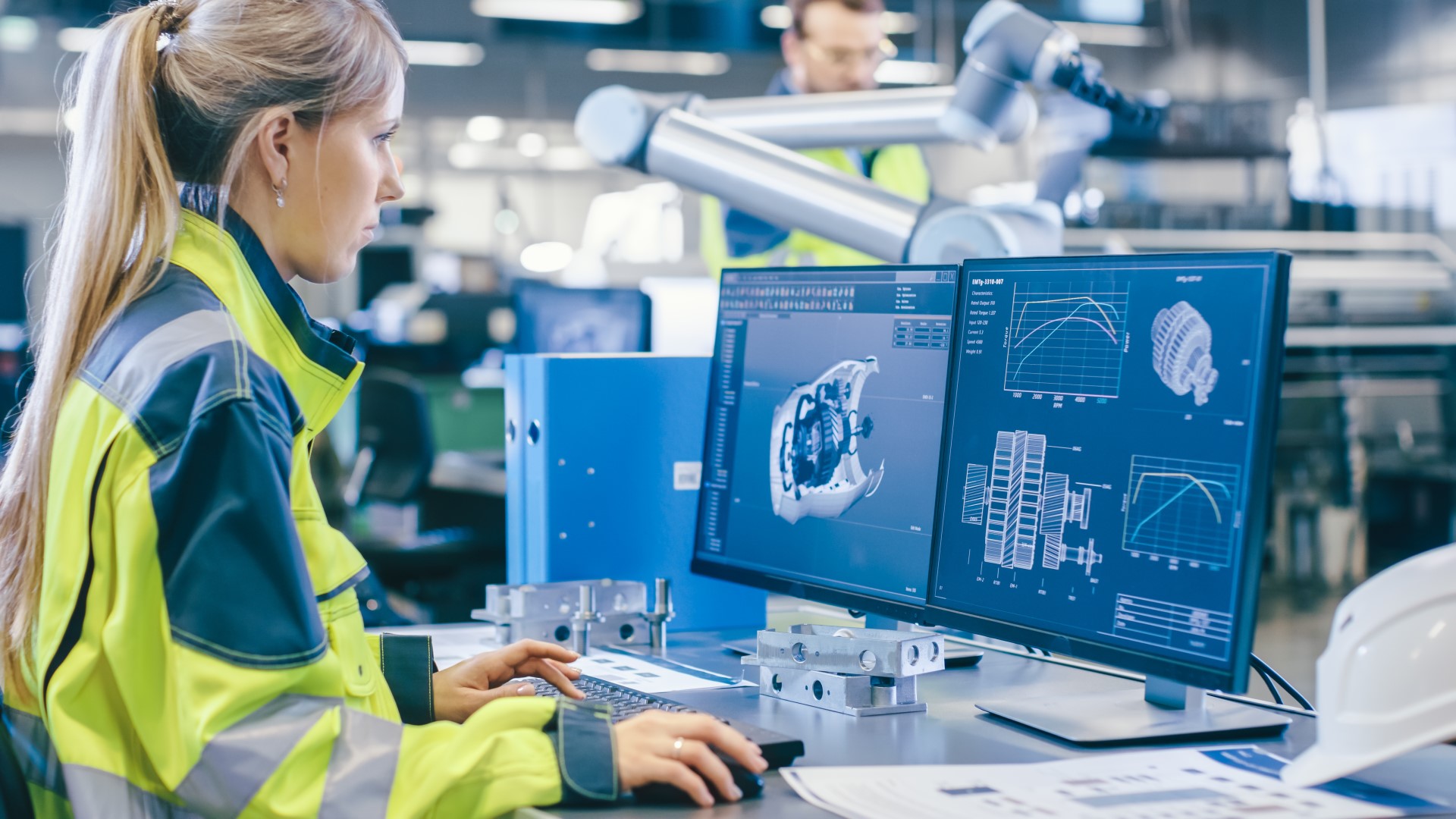SelectUSA Machinery and Equipment Industry
Industry Overview
Machinery manufacturing is one of the largest and most competitive sectors of the U.S. manufacturing economy. Leading markets for U.S. machinery exports include Canada, Mexico, China, South Korea, and Germany.
The economic impact of machinery manufacturing extends throughout the U.S. economy. Machinery industries provide essential and highly sophisticated technology for many other manufacturing and service industries. Industrial process controls and other automation technologies enable end-users to maximize the productivity of their equipment. Sales of many types of machinery are accompanied by a variety of high-value services as well, including specialized architecture, engineering, and logistics.
Tens of thousands of companies manufacture machinery in the United States. A majority of these manufacturers are small and medium enterprises (SMEs), but there are also many large, public companies and iconic American brands that trade on a global scale.
According to the latest employment estimates, over 1.1 million Americans were employed in the machinery manufacturing sector in mid-2024. These jobs are primarily in highly skilled, well-compensated trades and professions. Leading employment categories include team assemblers, machinists, engineers, and welders. Machinery manufacturing also supports the jobs of hundreds of thousands of Americans in a variety of other manufacturing and service industries.
This industry includes equipment used to grow, process, package, transport, and distribute food and beverages. Agricultural and food machinery and equipment includes agricultural equipment, food processing and packaging machinery, commercial and industrial refrigeration equipment, and commercial food service equipment. There were 1,118 establishments in the industry in 2022, and the latest employment figures estimated over 85,000 workers in mid-2024.
Machinery in this subsector includes machine tools, material handling equipment, welding equipment, and process control technology. Foreign direct investment contributed over $20 billion to the aerospace industry in 2023, and foreign-owned businesses employed 42,200 workers in the industry in 20227. According to the latest employment estimates, there were around 555,000 employees in the aerospace manufacturing industry in mid-2024. In 2022, there were 1,840 establishments in this subsector.
Automotive machinery and related systems, including machine tools, material handling equipment, welding equipment, and process control technology make up this industry. The automotive manufacturing industry is made up of three subsectors: motor vehicle manufacturing; motor vehicle body and trailer manufacturing; and motor vehicle parts manufacturing. As of 2022, there were 359 establishments in motor vehicle manufacturing subsector, 2,166 establishments in the motor vehicle body and trailer manufacturing subsector, and 4,640 establishments in the motor vehicle parts manufacturing subsector. Foreign direct investment contributed $195.5 billion to the industry in 2023, and foreign-owned businesses employed 512,000 workers in the automotive manufacturing industry in 2022. The latest employment figures estimated over 1 million workers in the automotive manufacturing industry in mid-2024.
Machinery in this subsector includes construction and mining equipment and related systems. This subsector includes self-propelled equipment, implements, accessories and components for use in construction, forestry, mining, and utilities. Off-road diesel engines and fluid power technology are also important components of off-road equipment. As of 2022, there were 666 establishments in this industry, and the latest employment figures estimate that over 76,000 workers were employed in this industry in mid-2024.
Machinery in this subsector includes equipment and machinery for generating, transmitting and distributing electric power. Major categories include turbines, power transmission equipment, and internal combustion engines (except automotive gasoline and aircraft) for electric utility and industrial applications. There were 908 establishments in this industry in 2022, and the latest employment figures estimate that there were over 92,000 employees in the energy machinery manufacturing industry in mid-2024. Foreign direct investment contributed $4.4 billion to the industry in 2023, and 12,600 workers were employed by foreign-owned companies in 2022.
Machinery in this subsector includes equipment and machinery used to mine and extract natural resources. These include mining and materials handling equipment and process controls, pumps, electric motors, and fluid power, as well as machinery used for oil and gas exploration and production. There were 894 establishments in this industry as of 2022, and the latest employment figures estimated that over 58,000 employees worked in this industry in mid-2024.
Explore the impact of foreign direct investment on U.S. jobs, exports, and innovation in the machinery and equipment industry.
The Investor Guide is a high-level view of everything from taxes to immigration and workforce to business structures.
SelectUSA has created several dashboards to help analyze key FDI data from a variety of sources.





